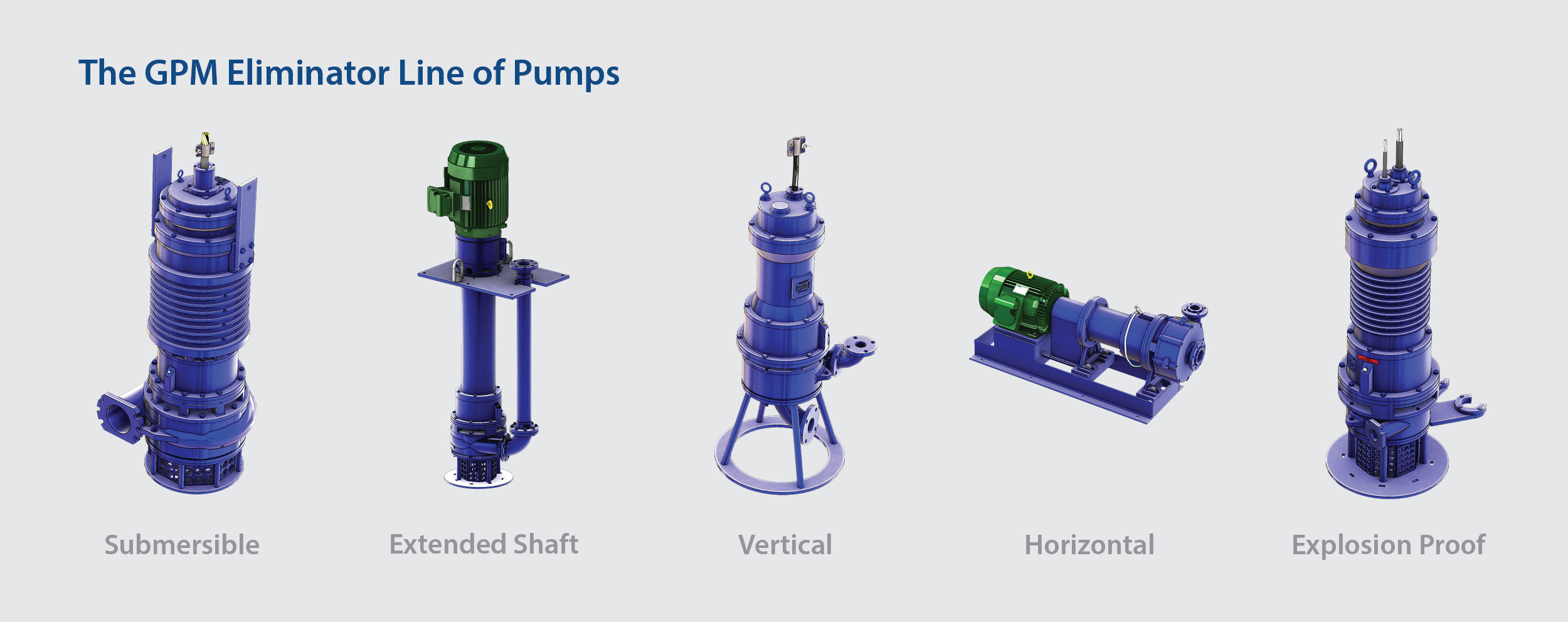By Blake Kolquist on Jul 29, 2021 11:16:51 AM
In mines and quarries, dewatering is a critical component of daily operations. These jobs deal with massive amounts of water that must be moved, pumped, stored, and managed. To accomplish all that effectively, industry leaders need complete pit dewatering systems that get the job done reliably.
GPM’s lineup of GPM-Eliminator™ pumps is used in some of the toughest dewatering applications found anywhere in the world. With pump options including submersible, horizontal, extended shaft and more, GPM is your go-to for dewatering solutions because our GPM-Eliminator pumps are designed to get the job done. Period.
We could talk all day about the benefits of GPM-Eliminator pumps, but in the interest of getting to the point, we’ll focus on three really good reasons to put a GPM-Eliminator in your slurry or dewatering system.
1. It can pump anything - up to 70% solids. Not exaggerating.
This is the honest-to-goodness truth. The GPM-Eliminator is powerful. That’s how we designed it 40 years ago, and that’s what keeps our customers coming back for more. We’ve pumped just about everything in the past 4 decades. From industrial or agricultural wastewater to corn mash for ethanol production or rocky taconite slurries, the GPM-Eliminator can handle it for hours, days, and years on end.
On the flip side, the GPM-Eliminator is built with durable motors that can run dry while unsubmerged without overheating or failing.
We once had a GPM-Eliminator pump arrive at our Duluth Service and Repair Center for manufacturer’s service maintenance. It was an older model. So old, we had to dig deep into our archived records to piece together the history of the pump. Turns out the pump had been operating around the clock for over 25 years - with no issues. While we don’t recommend going 25 years without maintenance, we’re always impressed that this pump lasted so long. Read the Tale of the Everlasting Pump.
2. It comes in the right size/model for any application
One-size-fits-all is NOT our mantra here at GPM. We find the right size pump for your specific needs, period. That’s why we have an entire GPM-Eliminator lineup of pumps that are best suited for different needs in a multitude of industries.
Every job is different, so specifying the right pump (or pumps) for the job takes some legwork. That’s where the GPM sales team comes in. Our team seizes the opportunity to sit down with our clients and have a face-to-face discussion about the specific needs for a job and ask a few simple questions – what is causing your existing pumps to fail? How is this impacting production? What are you looking to accomplish within this pumping system?
With details in hand and a good understanding of the challenge, we’ll walk down your system, put together a system head curve and compare it to GPM-Eliminator models to find the pump that is best suited to solve the problem.

3. It requires little to no maintenance. Annual service is plenty.
When we say “Made Tough™,” we really mean it. We designed the GPM-Eliminator to perform in the toughest applications - so we gave it oversized shaft bearings and best-in-class mechanical seals to minimize shaft deflection. We used 28% high chrome iron, 650 Brinell hardness wet-end materials and class H insulation. These features combine into a powerful pump that can pump anything - up to 70% solids - in any industry.
When a leading U.S. power generation company was operating with a 50/50 chance that their submersible pump would run during each wash cycle, GPM knew we could do better. We custom-engineered a double-columned extended shaft pump with 316ss components to withstand corrosion and durable 28% hard chrome GT4 liquid end. The results have been astounding. No more 50/50 gamble. The GPM-Eliminator extended shaft pump is a sure bet. Read the case study.
As Ryan Nowaskey, our Midwest GPM-Eliminator Regional Sales Manager, put it, “if we’ve been pumping taconite pellets for 40+ years, we can pump anything.”

.jpg)

